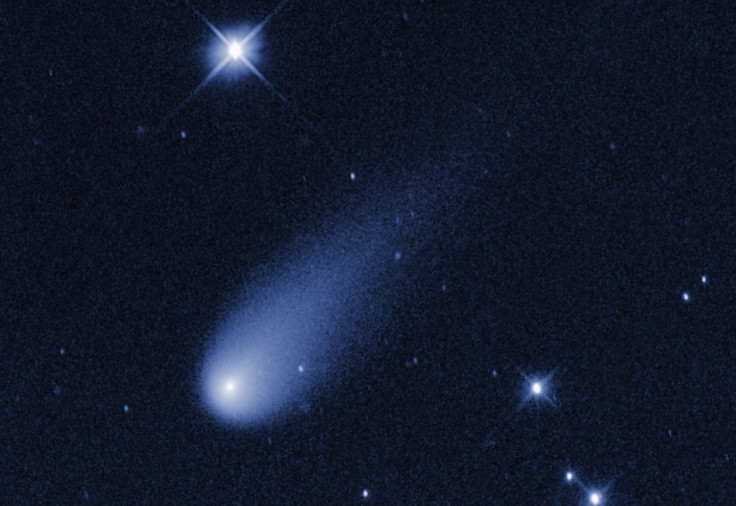Cosmic Factory: Collision of Icy Comets Sheds Light on Life on Earth
Icy comets smashing into each other in space produce amino acids essential to building blocks of life

Icy comets colliding produce amino acids, the building blocks of ice, potentially shedding light on how life on Earth started.
A team of researchers from Imperial College London, the University of Kent and Lawrence Livermore National Laboratory say they have found a "cosmic factory" in space producing organic material.
Published in the journal Nature Geoscience, the team also found amino acids are produced when rocky meteorites crash into planets with icy surfaces.
They found that when a comet hits another object it creates a shock wave that generates molecules that make up amino acids. This shockwave generates heat that then transforms the molecules into amino acids.
"Our work shows that the basic building blocks of life can be assembled anywhere in the Solar System and perhaps beyond," said Zita Martins, study co-author.
"However, the catch is that these building blocks need the right conditions in order for life to flourish. Excitingly, our study widens the scope for where these important ingredients may be formed in the Solar System and adds another piece to the puzzle of how life on our planet took root."
Extraterrestrial life
Between 4.5 and 3.8 billion years ago, Earth was bombarded with comets and meteorites. The researchers say the amino acids formed in space may have kick-started life on Earth during this time.
The researchers discovered this "cosmic factory" by recreating the impact of a comet by firing projectiles from a high speed gun into targets of ice mixtures with similar compositions to comets. The impact, they found, created amino acids.
Dr Mark Price, study co-author, said: "This process demonstrates a very simple mechanism whereby we can go from a mix of simple molecules, such as water and carbon-dioxide ice, to a more complicated molecule, such as an amino acid.
"This is the first step towards life. The next step is to work out how to go from an amino acid to even more complex molecules such as proteins."
The team says they believe the icy surfaces of the moons Enceladus and Europa, which orbit Saturn and Jupiter respectively, proved an ideal environment for the production of amino acids therefore life.
© Copyright IBTimes 2025. All rights reserved.






















